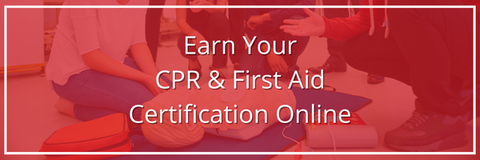
First Aid Training: How to Respond to Emergencies
Share
First Aid Certification is a basic overview of the course. The organization and administration section of the introduction is all about how you can take this course, who it's for, and why it exists. The communication and team coordination section discusses what happens when you get certified and what to do after you've become certified. This section also talks briefly about teamwork because that's an important part of any team, especially when it comes to emergency situations.
First aid is an important skill to have. It can help you, your family, and your community stay safe in an emergency situation.
First aid certification is valid for one year from the date of successful completion of training. You must complete a refresher course every year in order to maintain your certification.
Organization and administration
Organization and administration is a key component of first aid certification. It is about the logistics of first aid, management of first aid, coordination of first aid, and critical to the success of first aid.
Organization and administration in the workplace can mean many different things depending on your role within an organization or company. For example: if you are an administrator then your job will be focused on managing people while they are doing their jobs; whereas if you're an organizer then your focus would be more around scheduling meetings between different departments within a company or organization so that everyone knows what's going on with each other at all times (and also making sure nothing gets forgotten).
Communication and team coordination
- Team communication and coordination.
- Team leadership.
- Role definition and team dynamics.
- Communication skills, including listening, speaking, and writing skills.
- Risk management (including ethics).
- Routine task execution (e.g., fire drills).
Team members should be able to discuss:
- How to work as part of a team (e.g., roles and responsibilities)
Critical thinking and decision making
Critical thinking and decision-making are critical skills to have in any emergency situation. Critical thinking involves analyzing a situation and evaluating your options based on the information you have, while decision-making involves choosing an appropriate course of action.
Understanding how these skills apply to first aid is key if you want to be able to help someone who's injured or ill. For example, when dealing with an unconscious person who has stopped breathing, it's important that you don't assume that they're dead just because their heart isn't beating--your job is still far from done! You need to check their pulse again (or look at their carotid artery) before deciding whether or not they need CPR; even if there isn't any sign of life from outside appearances alone (for example no breathing), there could still be hope for recovery if given proper treatment within minutes after injury occurs.
Assessment, care, and transportation (CAT)
The assessment of the patient is an important part of any first aid situation. It allows you to determine what kind of treatment your patient needs in order to be adequately cared for. The following steps should be followed when assessing someone:
- Is the person conscious? If so, how alert is he or she? Does he or she respond appropriately when you talk to him or her? Does his/her breathing seem normal or labored? Check his/her pulse at the wrist or neck while asking questions like these: What's your name? How old are you? Does anything hurt right now? Are there any medical conditions we should know about before we start working on getting out safely together as soon as possible.
Trauma care, medical emergencies, and life-threatening situations
- Trauma care: In the event that you are faced with a traumatic injury, knowing how to manage the patient is essential. A key factor in preventing further damage is controlling bleeding and stabilizing fractures. You should also ensure that you have appropriate equipment on hand (such as tourniquets) as well as knowledge of how to use it properly.
- Medical emergencies: This category includes cardiac arrest and respiratory failure--both conditions that require swift action if they're going to be treated successfully. Knowing how to perform CPR on a patient who has suffered a cardiac arrest is one example of an important skill in this category; another is knowing when it's time for an ambulance rather than trying your best at home first!
- Life-threatening situations: These scenarios require immediate attention because they could lead directly to death if not dealt with quickly enough; examples include poisoning by gas or drug overdose, severe allergic reactions (anaphylaxis), burns from heat sources such as fire or steam pipes, hypothermia due to exposure during cold weather outside without proper clothing/gear.
Takeaway:
- First aid is a critical skill to have.
- Having first aid training and a well-stocked first aid kit can help you save lives.
- Know how to use the items in your first aid kit, as well as how they work together as part of a response plan.
- Find out what's included in different types of kits and how they differ from one another before purchasing one for yourself or someone else.
- Consider taking an online course through organizations so that you can learn more about how to respond effectively in emergency situations like heart attacks and car accidents (among other things).
The first aid certification is a valuable resource that can help you to prepare for emergency situations and respond appropriately. The skills you learn in this course will help you to save lives, as well as provide comfort and care for those who need it most.

